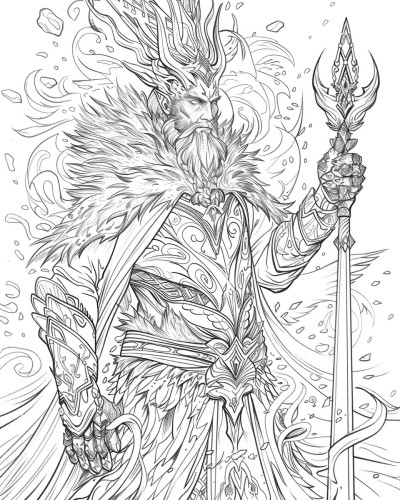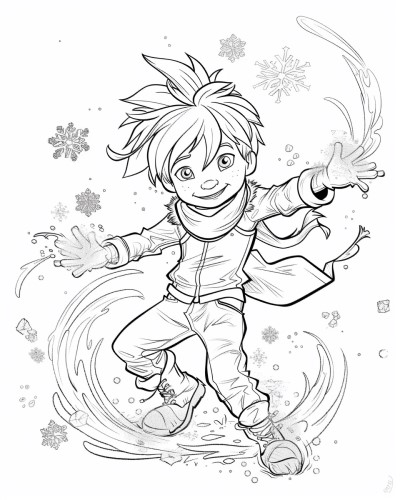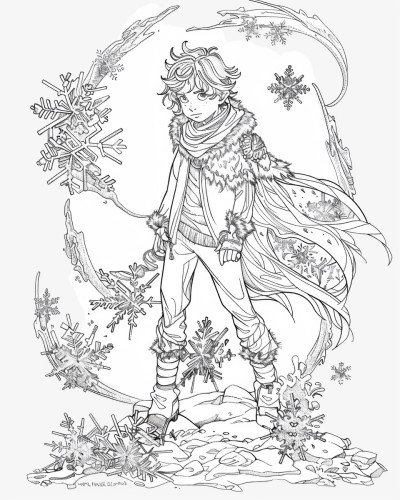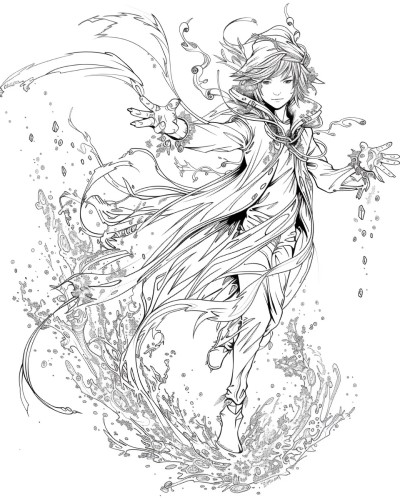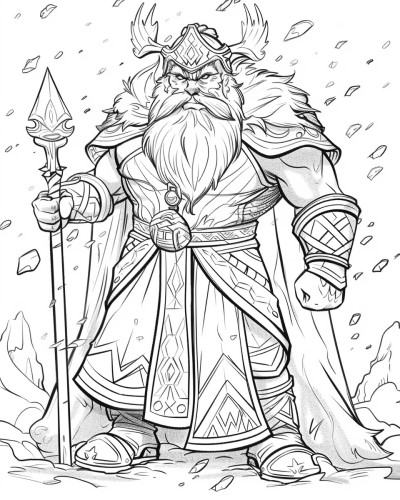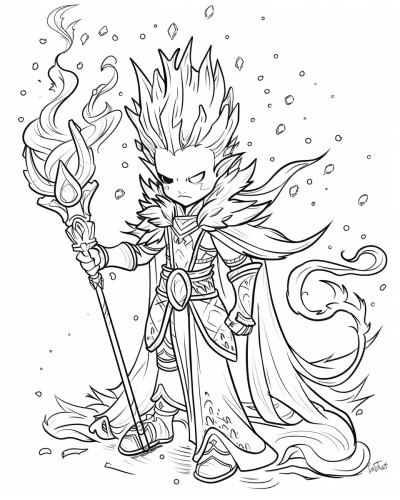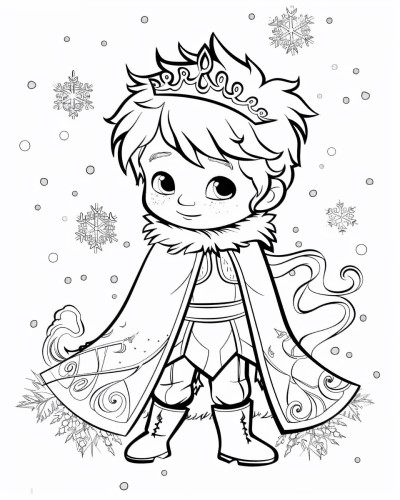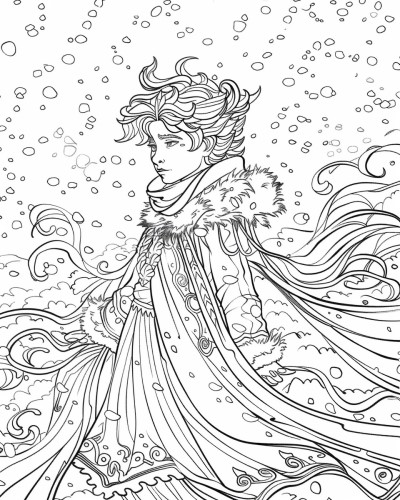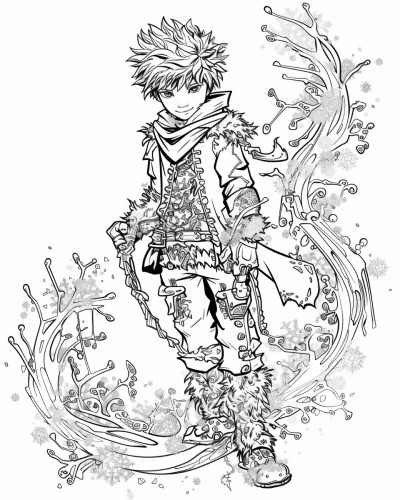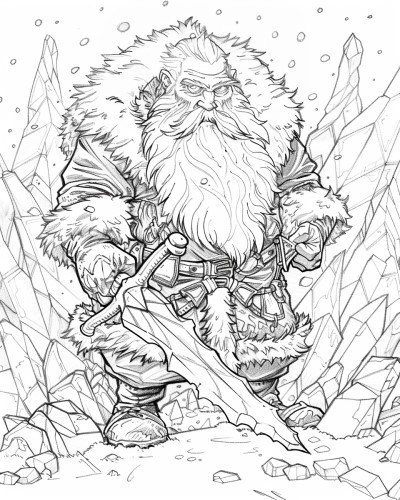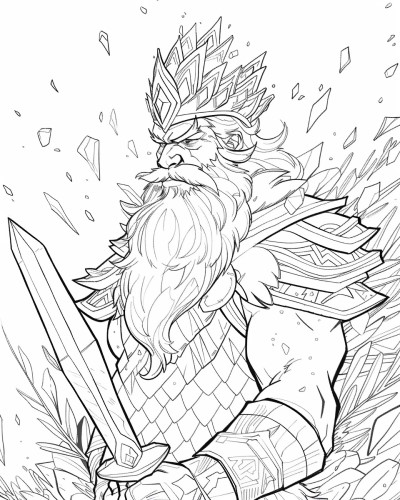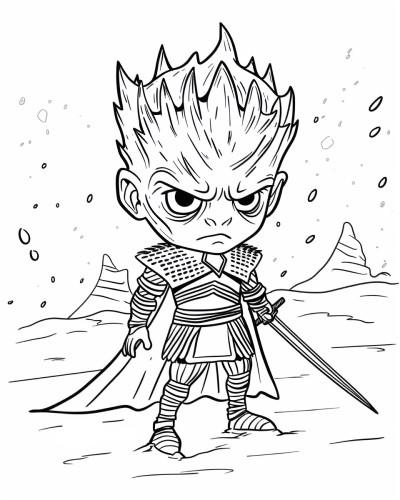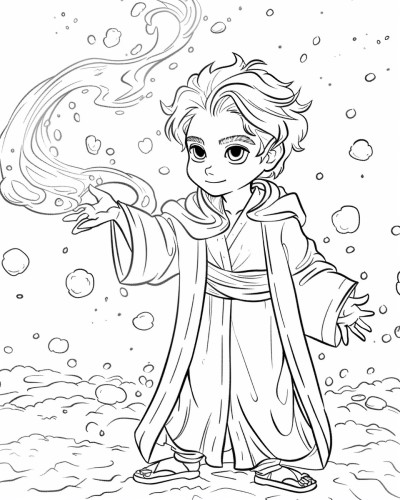Coloring Pages for Kids
Winter Kings and Spirits Coloring Pages
Coloring pages to go with any one of various legendary, mythical or fairy tale versions of a Snow Queen or Winter Queen or with a generic fantasy figure.
Male Winter Kings and Spirits from Mythology and Legend:
Male winter deities, kings, and spirits from various cultures often embody themes such as cold, darkness, and sometimes the more somber aspects of the season. Here is a list from a variety of cultures:
Grandfather Frost (Slavic mythology), or Ded Moroz, is a prominent figure in Slavic mythology and folklore, particularly within Russian, Ukrainian, and other Eastern European traditions. His name translates to "Old Man Frost" or "Father Frost," and he plays a role similar to that of Santa Claus in Western Christmas traditions, but with distinct characteristics and origins rooted in Slavic pagan beliefs.
Ded Moroz is traditionally depicted as a tall, elderly man with a long, flowing white beard, dressed in a long, fur-lined robe which is often blue or red. He carries a magical staff, which he uses to traverse the vast landscapes of the winter months, and sometimes rides in a troika, a traditional Russian sleigh pulled by three horses.
Ullr (Norse Mythology): A god associated with winter, skiing, bow hunting, and the Northern Lights. Ullr is said to be a superb archer and skier who would glide across the sky on his magic skis.
Jotun (Norse Mythology): The Jotun, often referred to as giants in Norse mythology, are primal entities embodying the forces of nature, with the frost giants, or "ice giants," being among the most formidable. Residing in Jotunheim and Niflheim, these towering beings are characterized by their immense strength, affinity for cold, and often adversarial relationship with the Norse gods. Frost giants are crucial to the mythological narratives, symbolizing the chaotic and untamed aspects of the natural world, particularly the harshness of winter and the ice that shapes the Scandinavian landscapes.
Jack Frost (Anglo-Saxon and Norse Mythology): Often depicted as an elfish character who personifies crisp, cold, winter weather. He is a playful spirit responsible for frosty weather, nipping the fingers and toes in such cold conditions, painting the foliage in autumn, and leaving fern-like patterns on cold windows in winter.
Morozko (Russian and Slavic Folklore):
Known as Father Frost or Old Man Frost, he is the personification of winter and brings the frost that makes the land sparkle. He is also depicted as a smith who binds water and earth together with heavy chains.
Khioneus (Greek Mythology): A lesser-known deity, he is a snow creature in Greek mythology, associated with snow and sometimes depicted as a dragon.
"King Frost": A traditional Russian fairy tale, "King Frost" personifies winter as a king who tests the kindness and endurance of a young girl. In this story, King Frost is a powerful being who controls the frost and cold. He covers the earth with snow and asks the girl if she is warm enough, progressively making it colder. Her polite and patient responses eventually warm King Frost's heart, leading him to reward her with lavish gifts. This story showcases the dual nature of winter--its harshness and its capacity for beauty and generosity.
"The Story of King Frost" in Andrew Lang's "The Yellow Fairy Book": Similar to the traditional Russian tale, this version also tells the story of King Frost, who tests a girl's endurance against the cold. The narrative follows a similar pattern, where the girl's good nature and resilience are rewarded by King Frost, who bestows gifts and warmth upon her, contrasting with her cruel stepmother and stepsister's fates. This adaptation brings the character of King Frost into the broader context of European fairy tales, highlighting the thematic elements of kindness, endurance, and the personification of winter's might.
White Walkers (Game of Thrones): White Walkers, known in the books as "The Others," are mysterious and malevolent beings from George R.R. Martin's "A Song of Ice and Fire" series and its television adaptation, "Game of Thrones." These ancient creatures come from the Far North of Westeros, bringing with them the cold and darkness of an endless winter. With the ability to reanimate the dead as their minions and their seeming invulnerability to most forms of harm, White Walkers pose a dire threat to the realm, embodying the existential peril of a world plunged into perpetual winter.
Ice Mages (Fantasy Literature and Games): Ice mages are sorcerers and magic-users found throughout fantasy literature, games, and media, known for their control over the elemental power of ice and cold. Utilizing their chilling abilities, they can cast spells to freeze enemies, create barriers of ice, and manipulate wintry weather to their advantage. Ice mages often use the dual nature of ice as both protective and destructive, using their powers to defend allies or assail foes with the ruthless efficiency of winter's touch. Whether heroes or villains, ice mages add a layer of depth and intrigue to magical narratives, showcasing the versatility and majesty of ice magic.
Sub-Zero (video games): an iconic character from the Mortal Kombat fighting game franchise, known for his mastery over the elemental power of ice and his enduring rivalry with the fiery ninja Scorpion. Clad in his trademark blue ninja garb, Sub-Zero belongs to the Lin Kuei clan and is distinguished by his ability to generate and control ice, using it to freeze opponents, create weapons, and execute a variety of chilling special moves. Over the series' evolution, Sub-Zero's character has been explored through different incarnations, including the original Sub-Zero, Bi-Han, and his younger brother, Kuai Liang, who took up the mantle after Bi-Han's death. Sub-Zero's cool demeanor, compelling backstory, and visually impressive icy abilities have cemented his status as a fan favorite and a central figure in the Mortal Kombat saga.
